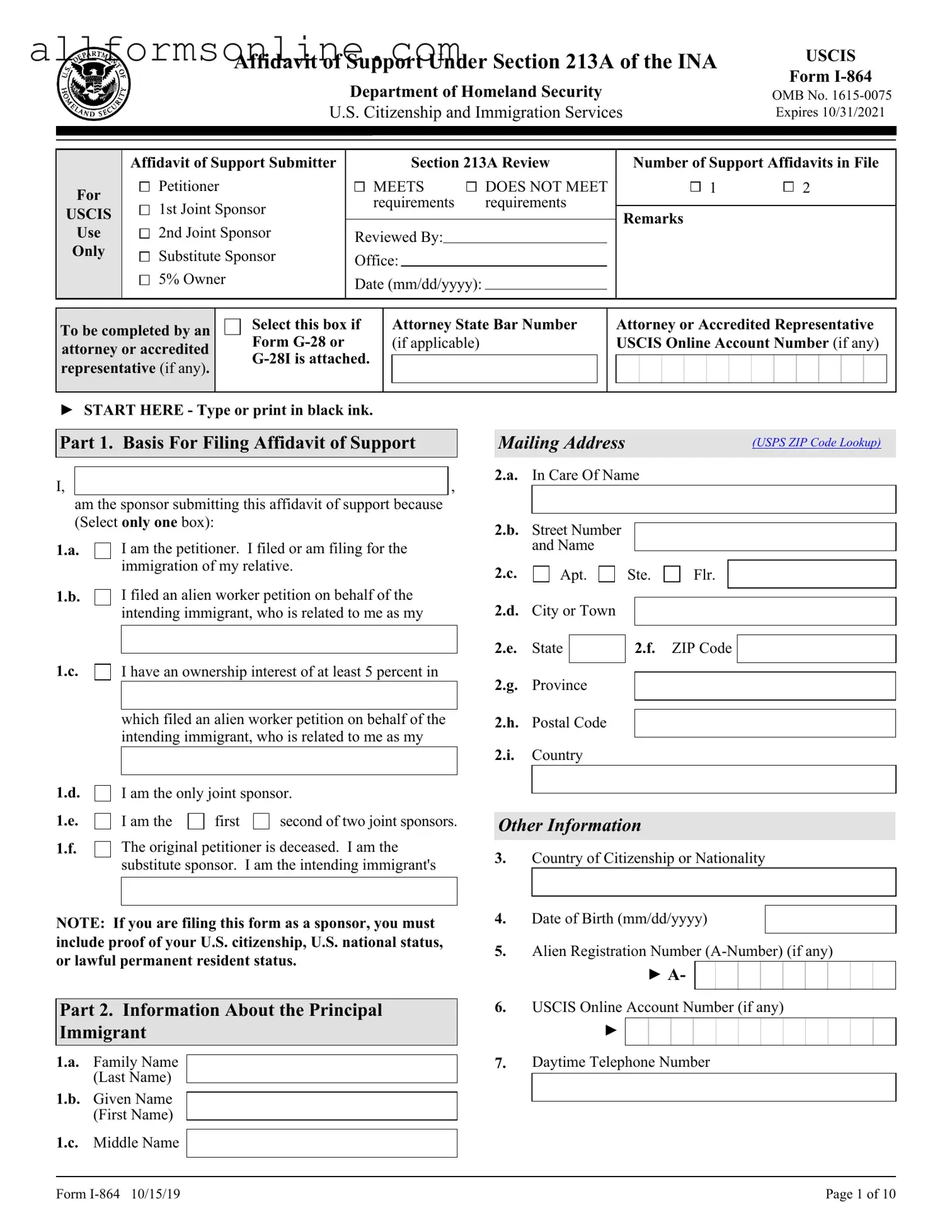What is the USCIS I-864 form?
The USCIS I-864 form, also known as the Affidavit of Support, is a document required by the U.S. Citizenship and Immigration Services (USCIS) for certain family-based immigration processes. This form demonstrates that a sponsor can financially support an immigrant, ensuring that they will not become a public charge. By signing this form, the sponsor agrees to provide financial support to the immigrant, which can include covering basic living expenses like food, housing, and medical care.
Who needs to file the I-864 form?
The I-864 form must be filed by a sponsor who is a U.S. citizen or a lawful permanent resident when they are petitioning for certain family members to immigrate to the United States. This typically includes spouses, children, and parents. In some cases, other relatives may also require a sponsor, depending on the specific immigration category.
What are the income requirements for the I-864 form?
To successfully complete the I-864, the sponsor must demonstrate that their income is at least 125% of the Federal Poverty Guidelines for their household size. This includes not only the sponsor but also any dependents and the immigrant being sponsored. For active-duty military members sponsoring a spouse or child, the requirement is lowered to 100% of the guidelines. It’s crucial to check the most current poverty guidelines, as they can change annually.
What if the sponsor's income is not sufficient?
If a sponsor's income does not meet the required threshold, they can still file the I-864 by including a joint sponsor. This is another individual who meets the income requirements and is willing to accept legal responsibility for supporting the immigrant. The joint sponsor must also complete a separate I-864 form, and their income can be combined with the primary sponsor's income to meet the requirement.
Can a sponsor use assets to meet the income requirement?
Yes, sponsors can use assets to supplement their income when filing the I-864. If the sponsor’s income is below the required level, they may include significant assets, such as savings accounts, property, or investments, to demonstrate financial stability. Generally, the value of the assets must equal five times the difference between the sponsor's income and the required income level. However, the assets must be readily convertible to cash and not subject to any legal restrictions.
What happens if the sponsor fails to support the immigrant?
If a sponsor fails to fulfill their obligations under the I-864, the immigrant may seek financial support through the courts. The sponsor can be held legally accountable for any public benefits the immigrant receives, such as food stamps or Medicaid. This means that the sponsor could be required to reimburse the government for any assistance provided to the immigrant.
Is the I-864 form valid indefinitely?
The obligations under the I-864 form do not expire immediately. The sponsor remains responsible for supporting the immigrant until one of several conditions is met: the immigrant becomes a U.S. citizen, the immigrant has worked for 40 qualifying quarters (approximately 10 years), the immigrant leaves the United States, or the immigrant passes away. This long-term commitment is important for potential sponsors to consider before signing.
Can the I-864 form be revoked?
Yes, a sponsor can withdraw their support by submitting a written request to USCIS, but this does not release them from their obligations if the immigrant has already received public benefits. Additionally, if the sponsor gets divorced from the immigrant, the obligation remains unless the immigrant becomes a citizen or meets other criteria mentioned earlier. Therefore, it’s essential for sponsors to understand the long-term implications of their commitment.
Where can I find more information about the I-864 form?
For more information, individuals can visit the USCIS website, which provides detailed instructions, resources, and updates regarding the I-864 form. It’s also beneficial to consult with an immigration attorney for personalized advice and assistance, especially if there are unique circumstances involved in the immigration process.
